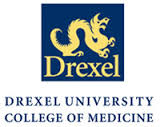Validation of Biomarkers in Amyotrophic Lateral Sclerosis (ALS)
| Status: | Completed |
|---|---|
| Conditions: | Neurology |
| Therapuetic Areas: | Neurology |
| Healthy: | No |
| Age Range: | 30 - 80 |
| Updated: | 6/4/2016 |
| Start Date: | April 2008 |
| End Date: | November 2015 |
A Multicenter Study for the Validation of ALS Biomarkers
The purpose of this study is to collect 650 blood and 300 cerebrospinal fluid (CSF) samples
from people with amyotrophic lateral sclerosis (ALS), pure lower or upper motor neuron
diseases, as well as other neurodegenerative diseases and from people with no neurological
disorder. Through comparison of these samples, the researchers hope to learn more about the
underlying cause of ALS, as well as find unique biological markers, which could be used to
diagnose ALS and monitor disease progression.
Additionally, up to 600 blood samples will be collected for a sub-study for DNA analysis.
Studying components of the blood, such as DNA, may help us understand what happens when
genes function abnormally and how it might be related to disease.
from people with amyotrophic lateral sclerosis (ALS), pure lower or upper motor neuron
diseases, as well as other neurodegenerative diseases and from people with no neurological
disorder. Through comparison of these samples, the researchers hope to learn more about the
underlying cause of ALS, as well as find unique biological markers, which could be used to
diagnose ALS and monitor disease progression.
Additionally, up to 600 blood samples will be collected for a sub-study for DNA analysis.
Studying components of the blood, such as DNA, may help us understand what happens when
genes function abnormally and how it might be related to disease.
Researchers tested what changes happen in volunteers with ALS that can be seen in the blood
and what changes are unique to ALS and are different from those found in healthy volunteers
and volunteers with neurological diseases other than ALS. These changes are called
biomarkers. Biomarkers for ALS have been found in blood collected in earlier phases of this
study. Biomarkers are non-genetic elements in your blood that may help to make diagnosing
ALS easier. In the next phase, comparison of these changes in the blood of volunteers with
ALS and without ALS will be used to confirm these biomarkers and to develop a tool to
diagnose and monitor progression of ALS.
and what changes are unique to ALS and are different from those found in healthy volunteers
and volunteers with neurological diseases other than ALS. These changes are called
biomarkers. Biomarkers for ALS have been found in blood collected in earlier phases of this
study. Biomarkers are non-genetic elements in your blood that may help to make diagnosing
ALS easier. In the next phase, comparison of these changes in the blood of volunteers with
ALS and without ALS will be used to confirm these biomarkers and to develop a tool to
diagnose and monitor progression of ALS.
1. ALS Volunteers
Inclusion Criteria:
- Diagnosis of possible (excluding volunteers with UMN signs ONLY), probable,
probable-laboratory supported, or definite ALS, either sporadic or familial
according to revised El Escorial criteria
- Disease duration of less than or equal to two years from symptom onset
- Age 30-80 years at the time of disease onset
- Ability to provide informed consent
- Ability to comply with study procedures
- Medically safe to have lumbar puncture (lumbar puncture volunteers only)
Exclusion Criteria:
- Clinical evidence of chronic liver or renal failure
- Presence of a bleeding disorder, problems with CSF pressure, allergy to local
anesthetics, or a topical or other skin infection at the LP site (lumbar
puncture volunteers only)
- Use of any anti-platelet or anticoagulant drugs, such as plavix, aggrenox,
ticlid, warfarin or coumadin (lumbar puncture volunteers only)
2. Suspected ALS (PMND) Volunteers
Inclusion Criteria:
- Diagnosis of suspected ALS defined as presence of UMN or LMN signs alone and the
diagnosis of Clinically Probably Laboratory-Supported ALS CANNOT be proven by
evidence in clinical grounds in conjunction with electrodiagnostic,
neurophysiologic, neuroimaging or clinically laboratory studies
- Disease duration of less than or equal to four years from symptom onset
- Age 30-80 years at time of disease onset
- Ability to provide informed consent
- Ability to comply with study procedures
- Medically safe to have lumbar puncture (lumbar puncture volunteers only)
Exclusion Criteria:
- Clinical evidence of chronic liver or renal failure
- Genetically confirmed diagnosis of hereditary spastic paraparesis or spinal
motor atrophy (SMA) disease
- Presence of a bleeding disorder, problems with CSF pressure, allergy to local
anesthetics, or a topical or other skin infection at the LP site (lumbar
puncture volunteers only)
- Use of any anti-platelet or anticoagulant drugs, such as plavix, aggrenox,
ticlid, warfarin or coumadin (lumbar puncture volunteers only)
3. Neurological Disease Mimic Volunteers
Inclusion Criteria:
Diagnosis of one of the following:
Pure Lower Motor Neuron Disease (LMND) mimics:
- Multi-focal motor neuropathy
- Autoimmune motor neuropathy
- Cervical or lumbosacral radiculopathies
Peripheral mononeuropathies:
- Ulnar neuropathy
- Carpal tunnel syndrome/median neuropathy
- Peroneal neuropathy
- Sciatic neuropathy
- Spinal muscular atrophy
- Spinobulbar muscular atrophy (Kennedy's disease)
- Charcot Marie-Tooth Disease (CMT)
Pure Upper Motor Neuron Disease (UMND) mimics:
- Cervical myelopathy
- Multiple sclerosis
- Hereditary spastic paraparesis
- Age 30-80 years
- Ability to provide informed consent
- Ability to comply with study procedures
- Medically safe to have lumbar puncture (lumbar puncture volunteers only)
Exclusion Criteria:
- Diagnosis of suspected, possible, probable or definite ALS either sporadic or
familial
- Presence of positive family history of ALS
- Clinical evidence of chronic renal or liver failure
- Presence of a bleeding disorder, problems with CSF pressure, allergy to local
anesthetics, or a topical or other skin infection at the LP site (lumbar
puncture volunteers only)
- Use of any anti-platelet or anticoagulant drugs, such as plavix, aggrenox,
ticlid, warfarin or coumadin (lumbar puncture volunteers only)
4. Healthy Control Volunteers Inclusion Criteria
- Absence of a known neurological disorder.
- Age 30 - 80 years.
- Ability to provide informed consent.
- Ability to comply with study procedures.
- Medically safe to have lumbar puncture.
Exclusion Criteria:
- History of ALS, myopathy, neuropathy, ALS mimic disorder or other neurodegenerative
disease.
- Presence of positive family history of ALS.
- Clinical evidence of chronic liver or renal failure.
- Presence of bleeding disorder, problems with CSF pressure, allergy to local
anesthetics, or a topical or other skin infection at the LP site (LP research
volunteers only).
- Research participant must not be taking anti-platelet or anticoagulant drugs, such as
plavix, aggrenox, ticlid, warfarin or coumadin (LP research volunteers only).
We found this trial at
30
sites
University of Pittsburgh The University of Pittsburgh is a state-related research university, founded as the...
Click here to add this to my saved trials
Emory University Emory University, recognized internationally for its outstanding liberal artscolleges, graduate and professional schools,...
Click here to add this to my saved trials
Johns Hopkins University The Johns Hopkins University opened in 1876, with the inauguration of its...
Click here to add this to my saved trials
Click here to add this to my saved trials
University of Chicago One of the world's premier academic and research institutions, the University of...
Click here to add this to my saved trials
Click here to add this to my saved trials
University of Miami A private research university with more than 15,000 students from around the...
Click here to add this to my saved trials
Click here to add this to my saved trials
3181 Southwest Sam Jackson Park Road
Portland, Oregon 97239
Portland, Oregon 97239
503 494-8311

Oregon Health and Science University In 1887, the inaugural class of the University of Oregon...
Click here to add this to my saved trials
University of Utah Research is a major component in the life of the U benefiting...
Click here to add this to my saved trials
Click here to add this to my saved trials
Lahey Clinic When Frank Lahey, MD, founded a group practice in 1923, his vision was...
Click here to add this to my saved trials
Click here to add this to my saved trials
Click here to add this to my saved trials
Duke Univ Med Ctr As a world-class academic and health care system, Duke Medicine strives...
Click here to add this to my saved trials
Click here to add this to my saved trials
Click here to add this to my saved trials
Click here to add this to my saved trials
Dartmouth Hitchcock Medical Center Dartmouth-Hitchcock is a national leader in patient-centered health care and building...
Click here to add this to my saved trials
Click here to add this to my saved trials
Click here to add this to my saved trials
Click here to add this to my saved trials
Click here to add this to my saved trials
Click here to add this to my saved trials
2900 W Queen Ln
Philadelphia, Pennsylvania 19129
Philadelphia, Pennsylvania 19129
(215) 991-8100

Drexel University College of Medicine Drexel University College of Medicine represents the consolidation of two...
Click here to add this to my saved trials
Click here to add this to my saved trials
Click here to add this to my saved trials
Click here to add this to my saved trials
Click here to add this to my saved trials
Click here to add this to my saved trials









